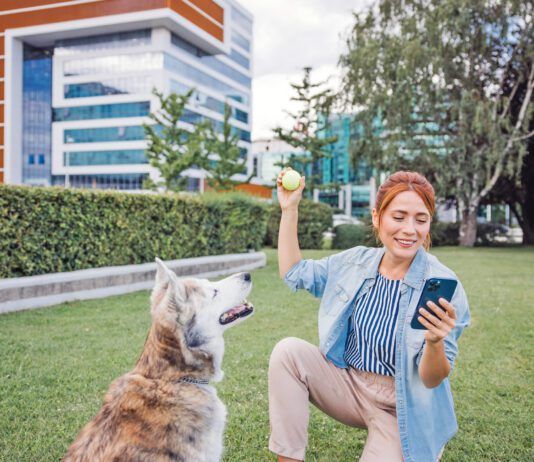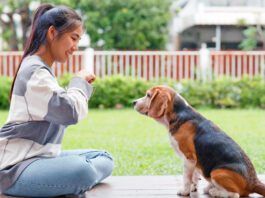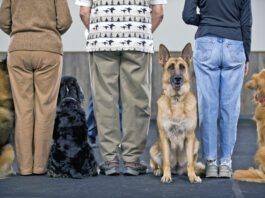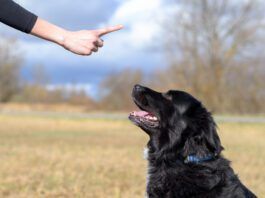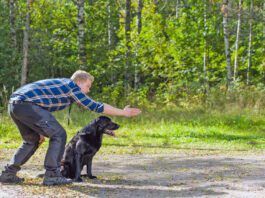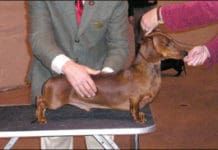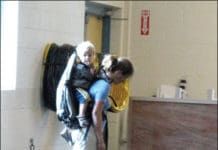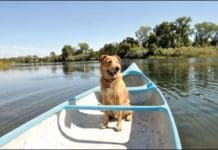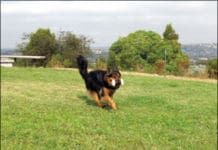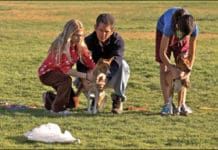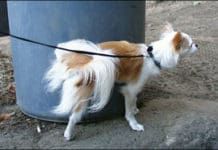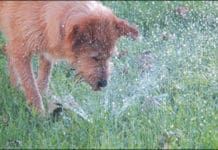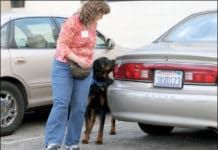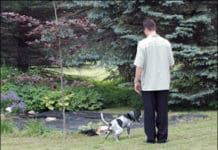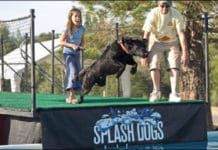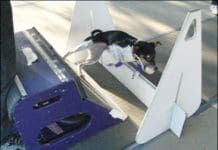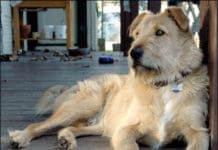How to Train Show Dogs
a positively trained Boxer
Rally Obedient Dogs
Forward! The judge cues the team to begin. The handler cues her dog to “heel” and, with her left arm bent in at her waist, briskly moves forward with her dog on her left side, heading toward the first in a series of signs that prompt her to cue one of a variety of behaviors. As she completes an “about turn,” a particularly challenging behavior for her long-bodied dog, she smiles, praises him, and moves on to the next sign, attempting to keep up a steady pace around the course of 20 signs. Wait! Did we hear her praise her dog in the ring? Horrors! Surely, the judge made note of that! He’s scribbling furiously now! The handler moves toward another sign and executes the “halt / sit / down / walk around” maneuver. As she releases her dog, she praises him again and even sneaks in a quick pat on the head. She can’t be serious! The judge must be grinding that pencil to a nub now! Does this handler not know that talking or touching your dog in the ring is not allowed? Ah, but therein lies the unique nature of “rally obedience.” It’s not just the signs and the greater variety of behaviors involved; it’s the philosophy of this sport that makes it distinct from its cousin, traditional competition obedience. Rally obedience was envisioned as a sport that would promote the human-canine bond by allowing more natural communication in both training and competition than historically had been available in traditional obedience.
Introducing Your Dog to New Activities
Three months ago, I introduced Otto to canoeing. This was only a couple of weeks after my husband had unwittingly traumatized Otto by dragging him across some fast-moving streams on a fishing trip. When I briefly described that event in the August issue, I don’t think I mentioned that this fishing trip happened when I was out of town; I didn’t learn that Brian was going to take Otto fishing until after it was all over. Brian tends to fish for many hours in a focused way; had I known about the trip, I would have tried to convince him that bringing the dog would be a distraction, and that Otto would need support and attention on a new type of adventure. Otto has, on a number of occasions, shown himself to be a little anxious about new experiences. So I’ve tried very hard to introduce him to strange places or activities in stages, always leaving plenty of time to allow him to explore and learn to deal with novel situations at his own pace. And I don’t take him anywhere new without a lot of high-value treats on hand, so I can reinforce any effort on his part to be brave – and to classically condition him to enjoy trying new things. In the long run, I want Otto to be able to confidently and happily go camping, backpacking, hiking, fishing, and, yes, canoeing with us.
How to Teach Your Dog to Play Fetch
Back in the day, when old-fashioned coercion training was de rigueur, it was generally accepted that if you didn’t teach a “forced retrieve,” you didn’t have a reliable retrieve. Today, as the field of modern, science-based positive reinforcement training has incubated and matured, we know better. While you can still find die-hard trainers who are more than willing to inflict pain on a dog to force him to hold a fetch object in his mouth, you can also find a growing number of trainers who are teaching happy, reliable retrieve behaviors without ever even considering the use of pain.When you stop and think about it, given the natural propensity of most dogs to want to put stuff in their mouths, it’s pretty absurd to think you should have to force a retrieve. How hard is it to find ways to reinforce a behavior that our canine pals offer so willingly? Of course, back in the day, we used to punish our puppies a lot for putting stuff in their mouths! Maybe that’s why it was difficult, later, to convince them that we wanted them to pick something up.
Lure Coursing: Is Your Dog Up for the Chase?
For just a minute, imagine you are a dog, a predator animal, with thousands of years of selective breeding to gaze upon the horizon and chase anything that moves. Let yourself feel the anticipation of that initial sighting and the blast of adrenalin as you take off and tear up the ground between you and your prey. Your front feet and your rear feet meet under your body as you coil tightly before exploding into full stride. As you hit top speed, your stride lengthens, enabling you to run 30-plus miles per hour. There is nothing you would rather be doing. The world outside your chase ceases to exist. You are in your element. This is lure coursing. You don't need to be a sighthound to experience the thrills of a good chase, but if you are, you are built for speed off the start line, resilience to overheating, and a reluctance to give up the chase. If you are a terrier with similar predatory instincts, you'll do fine as well. If you are a bit on the bigger, heavier side, you might enjoy the chase just as much, but you'll be slower and tire more quickly.
5 Ways to Stop Dogs from Urine-Marking in the House
Marking is not the same behavior as my bladder is full and I have to pee." Housetraining is just a matter of teaching your dog when and where to relieve himself. In contrast
A Progress Report on Positive Dog Training and Our New Dog Otto
and calls him to us for a pet or a treat. He's learned that coming straight to us is consistently rewarding
Nose Work: A Super Fun Dog Sport
Although handlers take their dogs to group training classes to learn the game, only one dog is worked at a time. As a result, this is an ideal sport for dogs who are shy or reactive around people or dogs. It is also ideal for people looking for a sport that is less physically demanding on their dogs and isn't populated by over-the-top, high-arousal dogs (and handlers). At the beginning levels of training, dogs are encouraged to find" their toy in a box. Lavish praise
How to Handle Your Dog’s Accidents in the House
whether it's on carpet or floors. The enzymes break down the smelly agents in urine and feces
Dock Diving: A Dog Jumping Competition
A Labrador leaps into a pool in a Splash Dogs contest, one type of dock jumping.
High-Energy Canine Competitions
Woof, yap, scream, yodel, bark, yip. Go, go, go!” Dogs on the sidelines and in crates and exercise pens barking at the top of their lungs. Dogs tugging and growling, tugging and growling. Handlers yelling over the din to their teammates. Handlers recalling their dogs over jumps, H-e-r-e! Event officials blowing whistles and announcing the next race over bullhorns or speaker systems, and start-line lights and passing lights flashing on and off. Flyball is a cacophony of sights and sounds. It is exhilarating, over the top, adrenalized hyperstimulation. This is not a sport for the introverted, timid, or sound-sensitive dog or handler. The adrenalin level is off the charts and you can hear that from hundreds of yards away. The first time I experienced flyball was as a spectator at an obedience trial held at a park. Suddenly, shattering the decorum, was an ear-piercing scream followed by rabid barking. Certain that an obedience dog had left the ring and treed a critter, I raced over to watch. No critter. No mayhem. Just flyball. The teams had just set up for their first race and the dogs were ready. I had never seen dogs so keen to get going.
Fear-Free Dog Training Methods
or threatening his general well-being if he made the wrong move. It wasn't fear of punishment or fear of me or some sort of amorphous "respect" that he had for me


